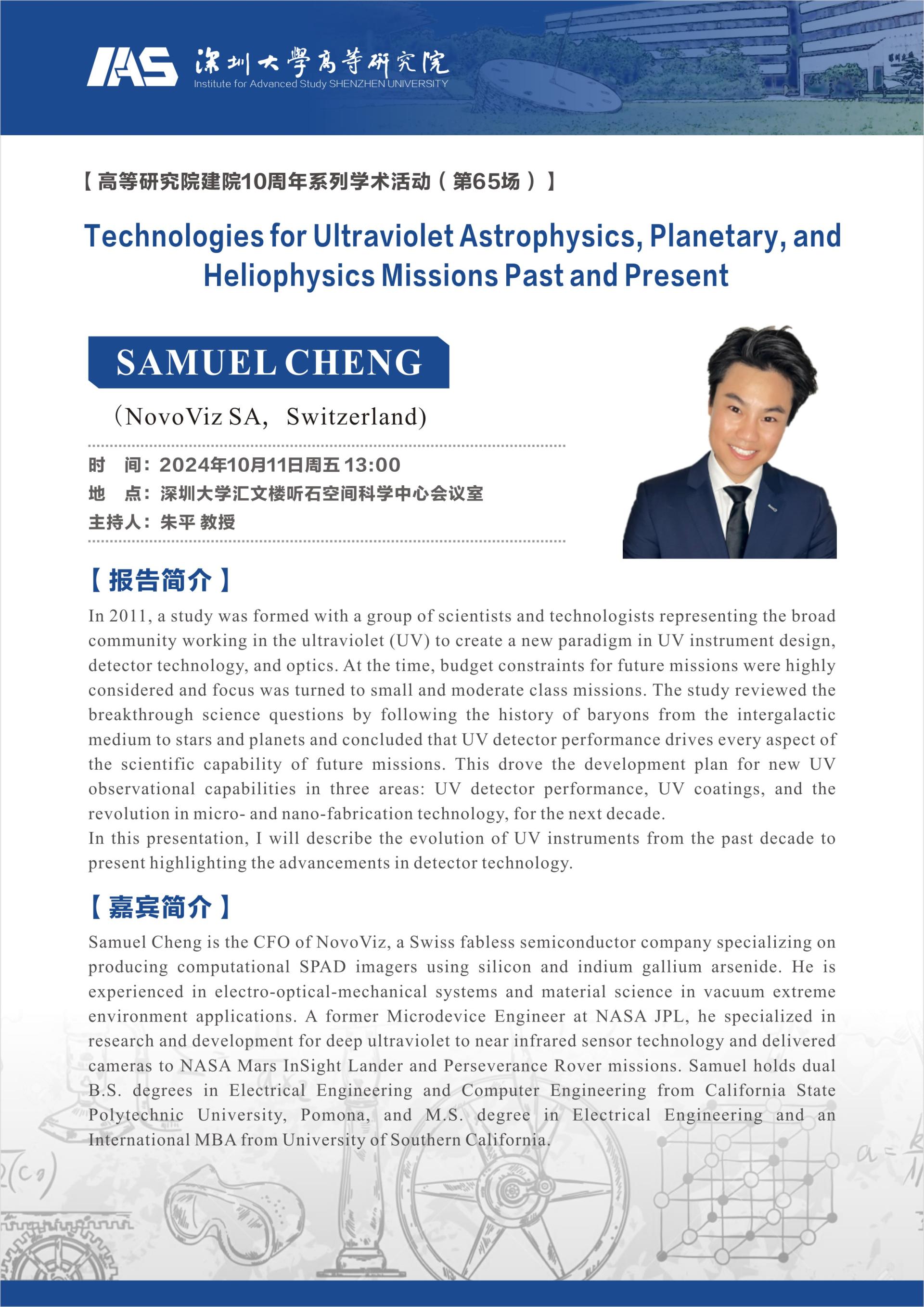报告主题:Technologies for Ultraviolet Astrophysics, Planetary, and Heliophysics Missions Past and Present
主讲人:SAMUEL CHENG(NovoViz SA,Switzerland)
主持人:朱平教授
时 间:2024年10月11日周五13:00
地 点:深圳大学汇文楼听石空间科学中心会议室
嘉宾简介:
Samuel Cheng is the CFO of NovoViz, a Swiss fabless semiconductor company specializing on producing computational SPAD imagers using silicon and indium gallium arsenide. He is experienced in electro-optical-mechanical systems and material science in vacuum extreme environment applications. A former Microdevice Engineer at NASA JPL, he specialized in research and development for deep ultraviolet to near infrared sensor technology and delivered cameras to NASA Mars InSight Lander and Perseverance Rover missions. Samuel holds dual B.S. degrees in Electrical Engineering and Computer Engineering from California State Polytechnic University, Pomona, and M.S. degree in Electrical Engineering and an International MBA from University of Southern California.
报告摘要:
In 2011, a study was formed with a group of scientists and technologists representing the broad community working in the ultraviolet (UV) to create a new paradigm in UV instrument design, detector technology, and optics. At the time, budget constraints for future missions were highly considered and focus was turned to small and moderate class missions. The study reviewed the breakthrough science questions by following the history of baryons from the intergalactic medium to stars and planets and concluded that UV detector performance drives every aspect of the scientific capability of future missions. This drove the development plan for new UV observational capabilities in three areas: UV detector performance, UV coatings, and the revolution in micro- and nano-fabrication technology, for the next decade.
In this presentation, I will describe the evolution of UV instruments from the past decade to present highlighting the advancements in detector technology.



